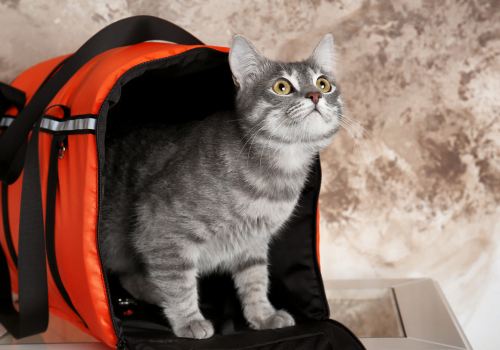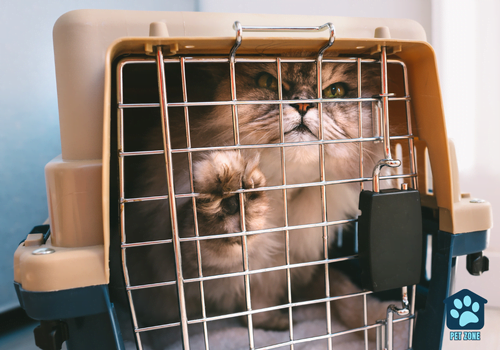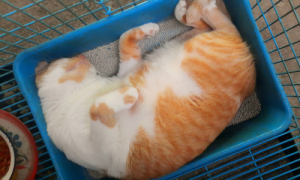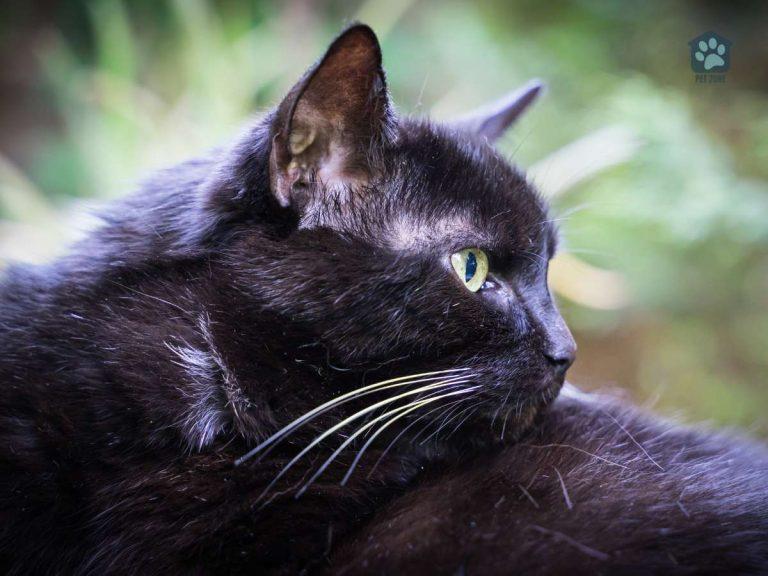Estimated reading time: 7 minutes
You’re finally taking that much-needed road trip and you’ve decided to take your feline friend with you. Now you have to wrestle with the dilemma of how best to keep your cat safe and comfortable at the same time while you’re on the road.
Unfortunately, putting your cat or kitten in a carrier overnight is not a good idea. We’ll examine the reasons why and talk about the best alternatives.
Why Your Cat Shouldn’t Sleep in a Carrier Overnight
While it might seem convenient to let your feline friend sleep in a carrier for the night, it’s really not the best idea, and here’s why:
While it might seem like a handy solution, using a carrier for your kitten or cat at night can lead to stress and discomfort for your cat and potential trouble for you. It’s best to reserve the carrier for transport.
The True Purpose Of A Cat Carrier
The design of a cat carrier is meant to keep your cat safe and comfortable during transportation.
They keep your cat contained, preventing them from running off in unfamiliar or potentially dangerous situations. They also prevent your cat from distracting a driver if you’re in a vehicle, adding an extra layer of safety.
They are typically compact, with just enough room for your cat to turn around and lie down comfortably. A good carrier will have plenty of ventilation and a secure latch to ensure your cat stays safely inside.
Some carriers also have compartments where you can place a small water dish or a blanket that smells like home, providing comfort to your cat during the journey.
A cat carrier is not a habitat. Your kitten or cat needs room to roam and explore, even when she’s indoors. She needs easy access to their food, water, and litter box at all times. The carrier is not designed to meet these needs over extended periods.
How to Get Your Cat Used to the Carrier
Start by placing the carrier in a familiar area where your cat likes to spend time. Leave the door open, so your cat doesn’t feel trapped.
Put some of your cat’s favorite things inside the carrier – think cozy blankets, toys, or even treats. The idea is to make the carrier an appealing place for your cat to explore.
Encourage your cat to go inside the carrier of their own accord. You might be tempted to force your cat into the carrier, but that can lead to negative associations. Instead, let your cat take their time to explore the carrier.
In time, with positive reinforcement and patience, your cat may begin to see the carrier as a safe and comfortable space. Remember, each cat is unique, so what works for one might not work for another.
How Long Can You Keep Your Cat in a Carrier?
Generally, a few hours should be the maximum amount of time your cat is kept in a carrier. For instance, a trip to the vet, a short move, or a car ride.
If you’re traveling a longer distance, regular breaks where your cat can stretch, hydrate, and use the litter box are essential.
Remember, the carrier is a confined space, and keeping your cat in there for an extended period can cause stress and discomfort. It’s crucial to ensure the carrier experience is as positive as possible for your cat, so they don’t develop a negative association with it.
What Is the Best Size Carrier for a Cat?
A carrier that’s too small can make your cat feel confined, while one that’s too big can make them feel insecure.
A good rule of thumb is to choose a carrier where your adult cat or kitten can stand, turn around, and lie down comfortably.
When to Use a Crate or Cage vs a Carrier
While carriers are great for short-term travel, there are times when using a cage or a crate at night might be more appropriate than a cramped carrier.
For example, if you’re moving house and you need to keep your cat in a secure space while you’re busy packing and unpacking, keeping your cat in a crate might be more comfortable than a carrier.
Another example is if you’re introducing a new pet into the household and want to provide your cat with a safe place of her own during the adjustment period.
Cages and crates can offer more space and easier access to food, water, and a litter box. Some people might also use a cage for their cat’s convalescence after surgery or during certain medical treatments.
However, like carriers, cages should not be used for long-term confinement. They should only be used temporarily and when it’s in the best interest of the cat’s safety and wellbeing. As always, ensuring your cat has enough space to move around comfortably is crucial.

Alternatives To Using a Carrier for Overnight Stays
Here are some options to consider in place of using a carrier for overnight stays when traveling:
A Spacious Crate or Cage
While carriers aren’t designed for cats to sleep in overnight, a spacious crate or cage can provide a safe and comfortable sleeping area for your cat. This option provides more space for your cat to move around, stretch, and have easy access to food, water, and a litter box. Ensure the crate or cage is large enough to cater to these needs without compromising your cat’s comfort.
A Separate Room
Providing a separate room for your cat to sleep in can be a good alternative to using a carrier. A dedicated room will give your cat more space to move around freely, reducing any feelings of confinement. As with the crate, make sure the room is safe and comfortable, with easy access to necessities: food, water, and a litter box.
A Cat Bed
A cozy cat bed can provide a comfortable sleeping area for your cat. Choosing the right bed involves ensuring it’s the correct size for your cat and is made of comfortable, warm materials that your cat will enjoy curling up in.
A Cat Backpack
If you need to transport your cat overnight, a cat backpack can be a good alternative to a carrier. These are designed with comfort and safety in mind, allowing your cat to settle in for the night. Look for a backpack that is spacious enough for your cat to move around and features good ventilation to ensure your cat stays cool and comfortable.
Extra Blankets or Outdoor Couch Cover
If you are traveling with your cat, bringing along extra blankets or an outdoor couch cover can provide a comfortable makeshift sleeping area. Make sure whatever you bring is clean, soft, and familiar to your cat to help them feel secure and content.
Conclusion
So to sum up, keeping your cat in the carrier overnight is not recommended, but you do have other options. Happy traveling!
So, how do you ensure your cat has a good night’s sleep? We’d love to hear your thoughts and experiences! Please engage with us in the comments section or share this post on your social media channels. We can’t wait to hear from you.








